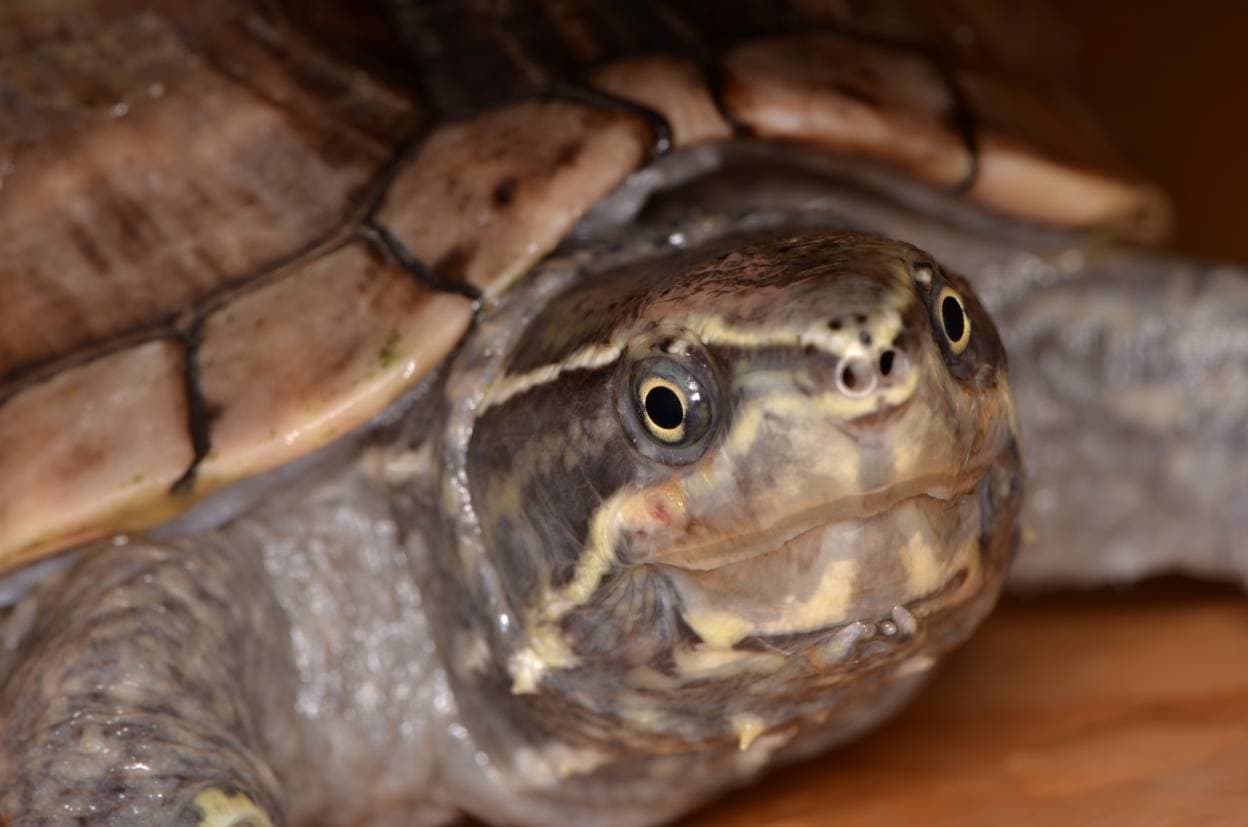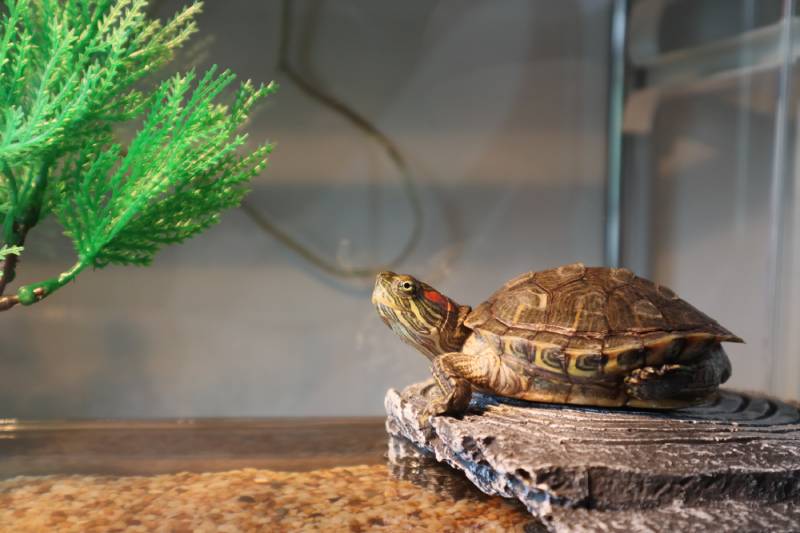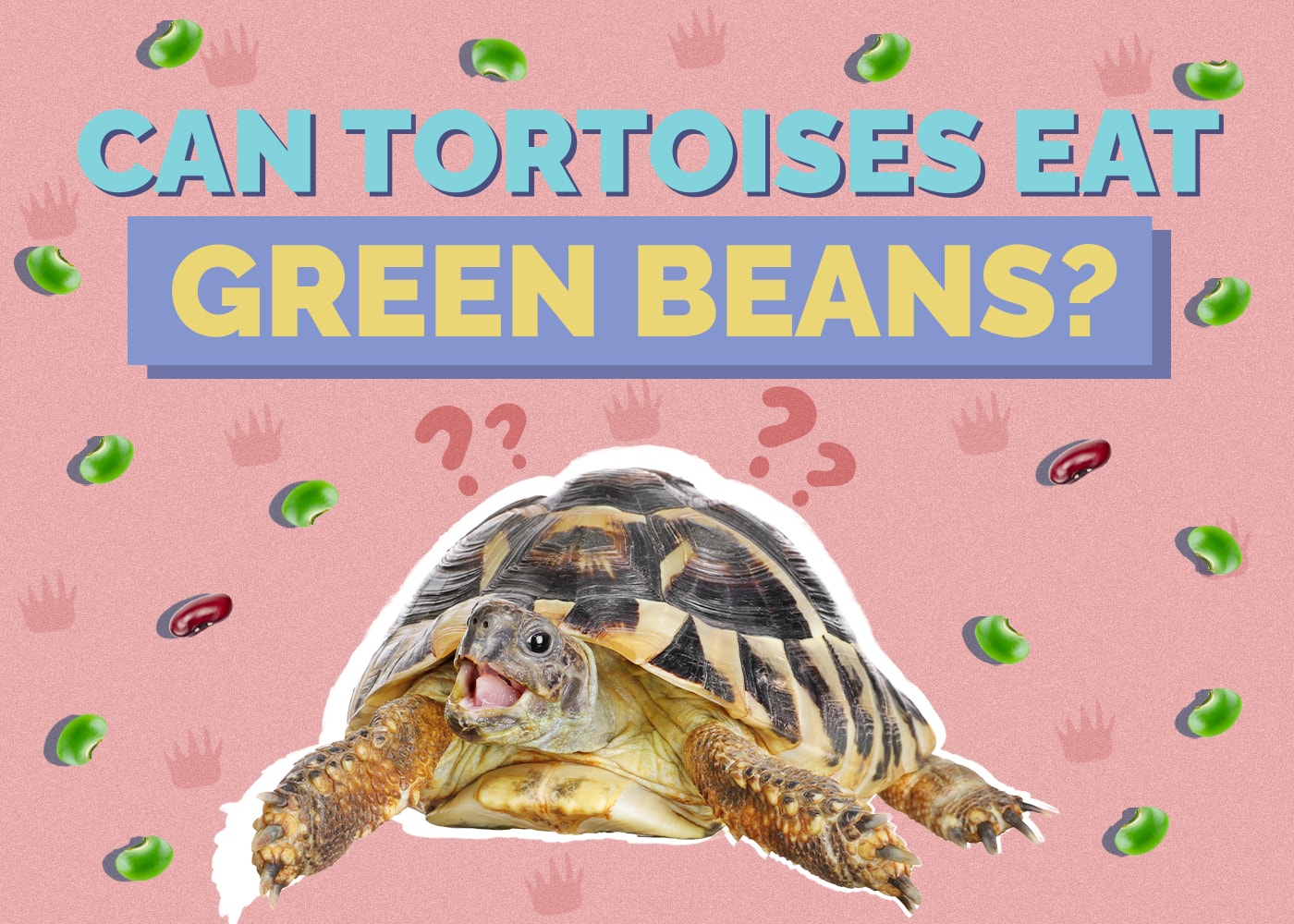Marginated Tortoise: Pictures, Facts, Diet & Care Guide
Updated on
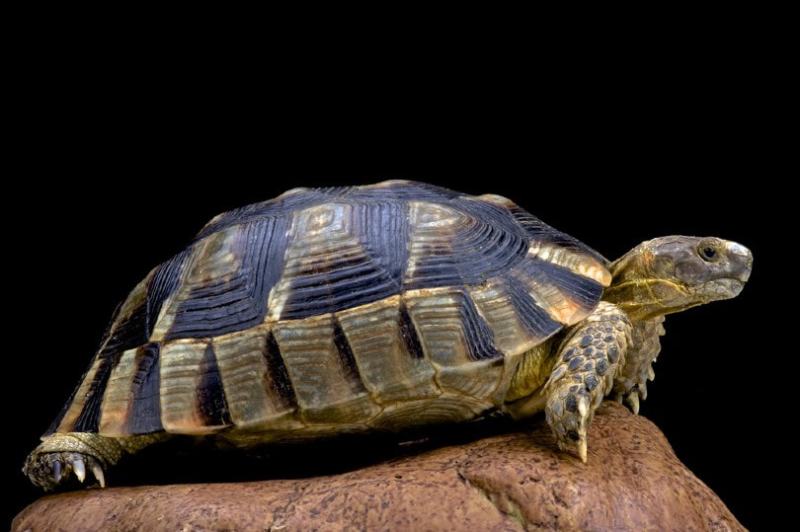
The Marginated Tortoise is the largest European tortoise of all, growing up to 11 pounds and 14 inches across. They’re one of the most popular tortoises for pets because they’re active, amiable in nature, long-lived, and have gorgeous shells. These tortoises live over 100 years in the wild, but more often, they live 20 years or more in captivity—even more of a time commitment than your average dog! For more info on the beautiful Marginated Tortoise, let’s check out some more details down below about them as well as how to best care for one.
| Size: | Medium |
| Weight: | 9–11 pounds |
| Lifespan: | 20–50 years |
| Suitable for: | First-time or experienced turtle owners; those seeking a chill, friendly, and long-lived turtle |
| Temperament: | Relaxed, docile, active |
Marginated Tortoises are best known and named after their distinctive shells, which have prominently flared marginal scutes that sort of resemble a skirt or a wide-toothed saw. They grow a lot faster than many turtles, gaining between half a pound to a pound per year until maturity.
Marginated Tortoise Breed Characteristics
How Much Do These Tortoises Cost?
Prices vary depending on where you live, but on average, Marginated Tortoises sell for $200 to $600. The price might also change based on whether you’re looking for a young tortoise or a mature one. We recommend looking into reputable reptile breeders in your area to locate a Marginated Tortoise, or perhaps checking nearby reptile enthusiast groups to network with experienced tortoise owners and get ideas where you can acquire one for yourself.
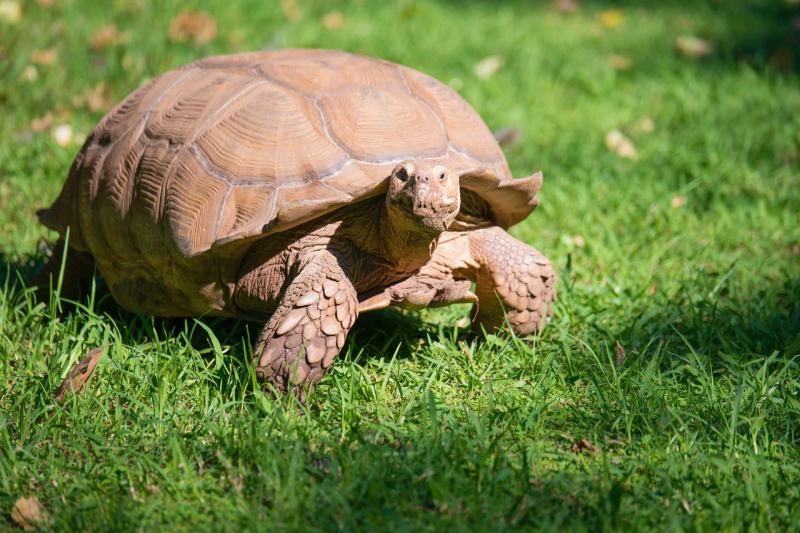
Marginated Tortoise Breed Behavior
Do These Turtles Make Good Pets?
Yes, and we think they’re one of the best species of turtle or tortoise you could choose. Marginated Tortoises have fairly standard habitat and diet requirements, which makes them a great introductory pet for people exploring the world of reptiles and other scaly pets. They’re not aggressive toward people, enjoying social interaction but with a preference for solitude. All in all, Marginated Tortoises are low-maintenance tortoises that can fit in great in any household without predator pets.
Marginated Tortoise Tank Mates
You can keep a Marginated Tortoise either alone, in a same-sex pair, or in an opposite-sex pairing with another Marginated Tortoise. However, we don’t recommend putting two males together because they can become territorial and may fight. Females sometimes do this too, but not nearly as often.
While turtles are generally solitary critters, they may enjoy having another tortoise to live and interact with, and Marginated Tortoises have been known to coexist peacefully with bearded dragons, geckos, and other mild-mannered reptiles.
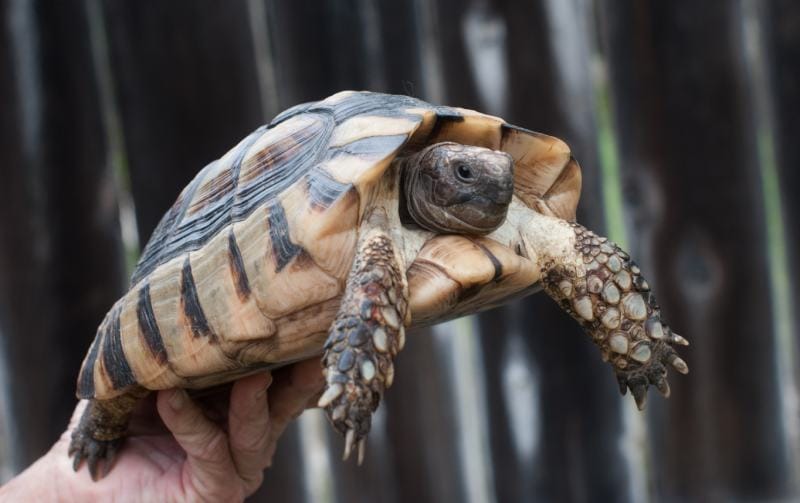
Care Sheet & Habitat Setup:
Light Requirements
Like other turtles, Marginated Tortoises need UVA and UVB light to synthesize vitamin D3 and stay healthy. They should also have the option of both cool and warm spaces in their habitat to help regulate their body temperature.
To do so, set up a basking lamp with your desired UVA/UVB bulbs on one side of the habitat while leaving the other side slightly more shaded. Properly set up, your cool side should be 70–75 degrees Fahrenheit while the warm side should be around 80–90 degrees Fahrenheit.

Tank Size
We recommend a smaller tank for when your Marginated Tortoise is younger so you can have more control over the tank’s temperature and light levels. However, adult tortoises will need more space, and, in general, more space is better than less space. A 4’ x 2’ tank works fine as a basic habitat, but we’d suggest upgrading to a 6’ long tank if space permits. This is highly individual, though, and you should always go by your tortoise’s size and comfort rather than just picking out arbitrary measurements.
Plants
Adding dry grasses, wildflowers, and succulents to your tortoise’s enclosure can help make them feel more at home and serve as occasional treats. Lemon balm, aloe, dandelions, and nasturtiums are just a few options you can use, and there are many more plants your Marginated Tortoise will love.
Substrate
Marginated Tortoises are land turtles that do best with a sandy soil as the base substrate for their habitat, as that’s their preferred substrate in the wild. Adding plain old garden soil and a handful of coarse sand will do the trick nicely and offer you the option of growing plants too.
Water
Marginated Tortoises don’t need a lot of water in their enclosure, but you should always keep a clean, shallow container of water for them to soak in. They get most of their water from the food they eat, but access to clean water helps them regulate their temperature by cooling off on hot days.
Things to Know When Owning a Marginated Tortoise:
Food & Diet Requirements
Marginated Tortoises are largely herbivores that also eat a variety of insects. The average adult needs about 80% to 90% leafy greens and other plants, with relatively minimal protein from insects or other sources. Juvenile tortoises will eat more insects because they need lots of protein to grow strong and healthy, but you can taper off their insect intake when they reach maturity at about 10–14 years old.

Size & Growth Chart
Marginated Tortoises are fairly large and grow fast compared to other species, but how big are we talking? It’s a good idea to keep an eye on your tortoise’s growth as they age to make sure they’re healthy and not missing any essential nutrients in their lifestyle. For a more detailed idea of how Marginated Tortoises grow, refer to our size chart below. And remember, these are just rough estimates.
| Age | Length | Weight |
| Hatchling (1-2 weeks) | 0.5–1 inches | 4–8 ounces |
| Juvenile (2-14 years) | 4–10 inches | 4–8 pounds |
| Adult (14+ years) | 9–14 inches | 9–12 pounds |
Lifespan and Health Conditions
- Shell Rot
- Parasites
- Respiratory Illness
- Metabolic Bone Disease
Minor Conditions:
- Shell Rot: Caused by bacteria entering the shell, shell rot can make your tortoise’s shell flaky, discolored, soft, or begin to rot.
- Parasites: Tortoises can ingest parasites infesting their food or insects, causing a wide range of ailments like fatigue, weight loss, or skin/shell discoloration.
Serious Conditions:
- Respiratory Illness: Persistently humid environments or not providing enough dry land for your tortoise’s habitat can cause them to get dangerous and possibly fatal respiratory infections.
- Metabolic Bone Disease: When tortoises don’t get enough calcium, it can cause their shell and bones to soften and deform.
Male vs Female
Male Marginated Tortoises tend to be larger, more confident, and more active than females, who are more docile and gentler. However, individual temperament can vary a lot as well as tankmates. In particular, males housed with other males can become aggressive toward humans.
3 Little-Known Facts About the Marginated Tortoise
1. Marginated Tortoises Can Live Over 100 Years in the Wild
Marginated Tortoises are very long-lived creatures, and we know they can live over a century in the wild but far fewer years in captivity. Why is that? Well, a lot of it is down to food and habitat. Many tortoises are kept in cramped conditions and fed a limited, static diet that doesn’t sate all their nutritional needs.
2. They’re Native to the Mediterranean
Marginated Tortoises come from a surprisingly small area spanning the Mediterranean, but most are in Greece, Italy, and Turkey. There are a couple of other relatives in the Testudo family, but Marginated Tortoises are the biggest and most popular of the lot.
3. Their Shells Are Varied
While most Marginated tortoises are known for black and yellow shells, they can display other colors like red, brown, and orange. The exact patterns on a tortoise’s shell can change over time, and no tortoise’s shell is identical to another tortoise’s shell.
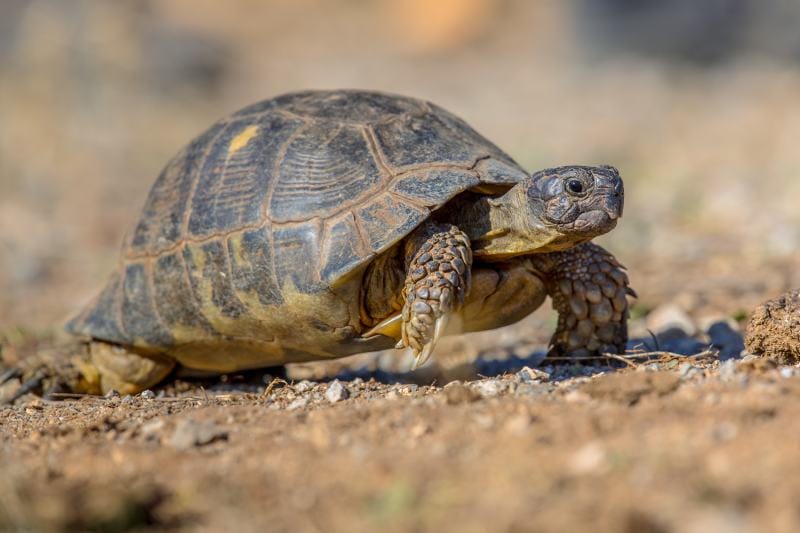
Final Thoughts
Marginated Tortoises are one of the most popular big turtles to choose for a pet, due to their relaxed habitat requirements and their shy nature. We recommend these for anyone curious about owning reptiles, but beware that they can live a very long time and pose a serious time commitment!
Featured Image Credit: reptiles4all, Shutterstock

